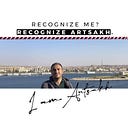Rwandan Weaving History
Hutu, Tutsi, and Twa are the three major ethnic groups within Rwandan culture. These divisions are primarily based on perceptions of historical group origins rather than actual cultural differences. They all speak the same language, practice the same religions, and are geographically dispersed throughout the same region, so despite their extreme political divergences, it is generally accepted that all three groups share a common culture.
Basketry industry in Rwanda
The people of Rwanda and those living in its neighbouring countries both share a culture called Rwandan. The most common form of artistic expression in both Rwanda and Burundi was the weaving of architectural components and storage containers. The volcanic and mountainous terrain of the area was home to a wide variety of grass-like plants, which were used as the main building material.
The construction of granaries, beehives, and fishnets required the use of fibre products, which were essential tools in Rwandan society for farming operations. Large baskets that were shaped and sized specifically for different kinds of grains were traditionally used to store harvested crops. Most Rwandans make their living primarily by raising cattle.
A milk container with a basketry lid was among a shepherd's tools. Additionally, woven-fibre ornamental tapestries were used to adorn the shelves where these were kept.
Gender-specific duties were associated with basketry among the Tutsi elite. Homes, granaries, fences, and other substantial fibre-based structures were constructed by men. The floor mats, baskets, and wall panels in the museum's collection were all made by women, who also produced more intricately woven items. When people got together for fun in the evenings, basket weaving was a common activity.
The Tutsi harpist's music accompanied the women as they worked on their beadwork, baskets, and embroidery. On such occasions, decorative architectural components were made, including mats, space dividers, and woven basketry "tapestries." These patterns, which contrasted sharply in black and white to create a visually vibrant arrangement, entirely covered the interiors of Tutsi homes.
Black, red, and natural gold fibre alternated with similar variations in decorative patterns in finely woven miniature baskets. Such intimate-sized baskets were made primarily to be given as gifts and had no common use aside from storing priceless items such as the master of the house's pipe, beads, or amulets.
The Rwandan Folk Costumes
Rwandan ladies traditionally dress in Musanana, which encompasses a floor-length skirt with a sash swathed over one shoulder, worn over a tank top or bustier. Ladies made their hair in a way that consisted of a bun decorated with beads and tied in place by two ribbons that passed across the forehead and over the bun, crossing above the ear. A comb is placed above one ear beneath the crossing point of the flags; this is a way traditional Rwandan women could dress up.
However, Rwandan men wear their Umushanana with a white shirt tucked into a wrapped floor-length skirt.
Up until the 1920s, fibres made up the majority of the clothing worn by both farmers and members of the aristocratic elite. Then, imported textiles started to take their place.
Fibres, Technique, and Patterns
Most Tutsi fibre artefacts were made with raw materials from plants like bamboo, grass, cane, reed, raffia, and banana leaves. The makers of Tutsi basketry skillfully blended natural black and red pigments with the grass's pale gold colour to produce the distinctive geometric patterns that graphically decorated these fibres. The boiling banana flower sap, which was used to make black dye, is dark in colour. Both the root and seeds of the urukamgi plant were used to make the red dye. After the 1930s, more diverse colour palettes were frequently used in artwork thanks to dyes that were imported.
The created motifs had specific names, and they had a wide range of options available to them. We have a priceless source of information on the Tutsi graphic system thanks to Marcel Pauwels, a Belgian missionary who lived in Rwanda in the 1950s. He asked Abbé Alexis Kagame to assist him in carefully cataloguing the names and meanings of the existing motifs.
The following patterns that are visible on pieces in the museum's collection can be named thanks to Pauwels' investigation: Isimbi (cowrie shells), a pattern of alternating black-and-white triangles on horizontal bands; Itana (smaller black-and-white triangles); Umukebo (a black-and-white checkerboard motif; from the verb "to cut"); and, specifically for architectural elements, ikibero (the thigh) and ishobe (the transversal line).
To make basketry work, specific tools were employed. The three most crucial tools were the umshyo, a tiny knife, and the urwabya, a tiny earthenware vase filled with water to maintain the moisture of the fibres. The iron lancet, uruhindu, was used for cutting and piercing.
The type of item created dictated a wide range of weaving techniques. Vegetable fibres were mounted on a spiral frame that had been stitched to create igiseke baskets. By using two-sided panels, the igihisi technique made it possible to create works with a frame and a cover.
The decorative cover was made of several layers of reed, usually natural and dyed black, attached with thin raffia or sisal fibres to define the desired motif, while the structural frame was a panel of interwoven bamboo strips.
The devastating social unrest that took place in Rwanda in the 1990s destroyed many early works that exhibit the technical sophistication seen in the pieces in the museum's collection. A recent resurgence has led to the opening of new workshops in Rwanda for the production of baskets and other handicrafts.
#Rwanda #handicrafts #weaving #Hutu #Tutsi
#Isimbi #Itana #Umukebo #ishobe #basketry #basketryart #MarcelPauwels #AbbéAlexisKagame #rwandanarts #folkcostumes #Musanana #motifs #Umushanana #Twa #culture #africanarts #weavinghistory #traditionalclothing #traditionalcostume
